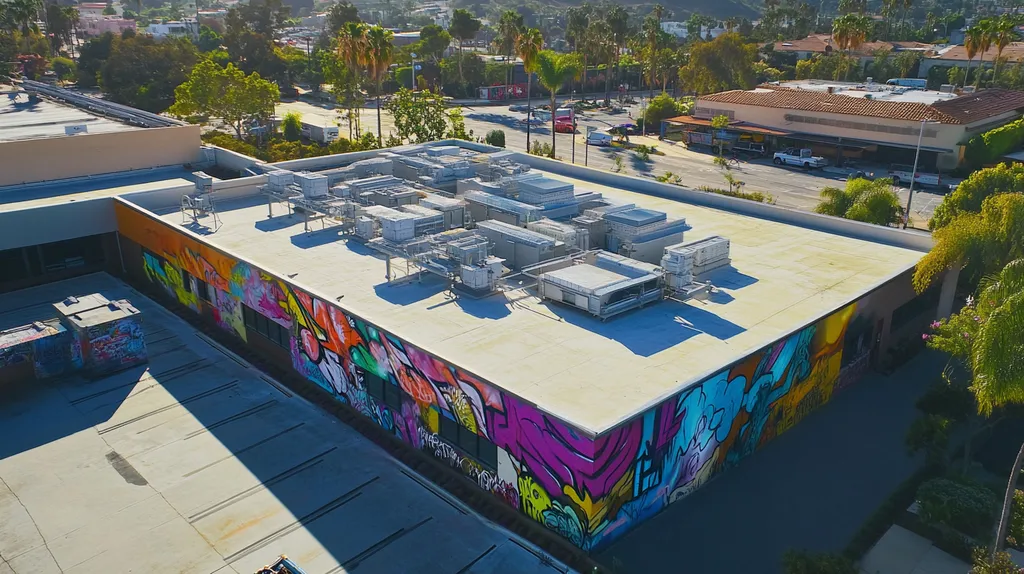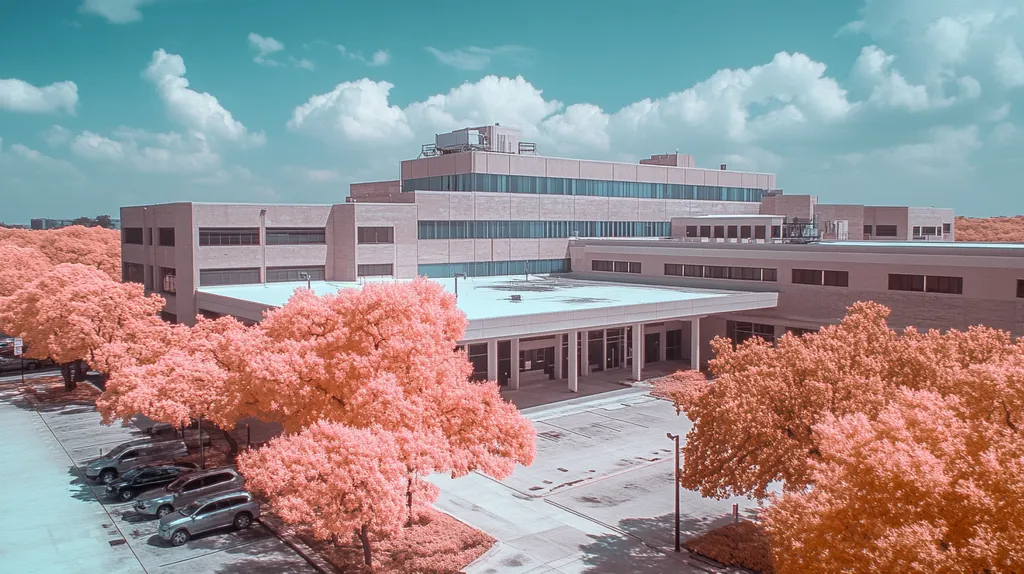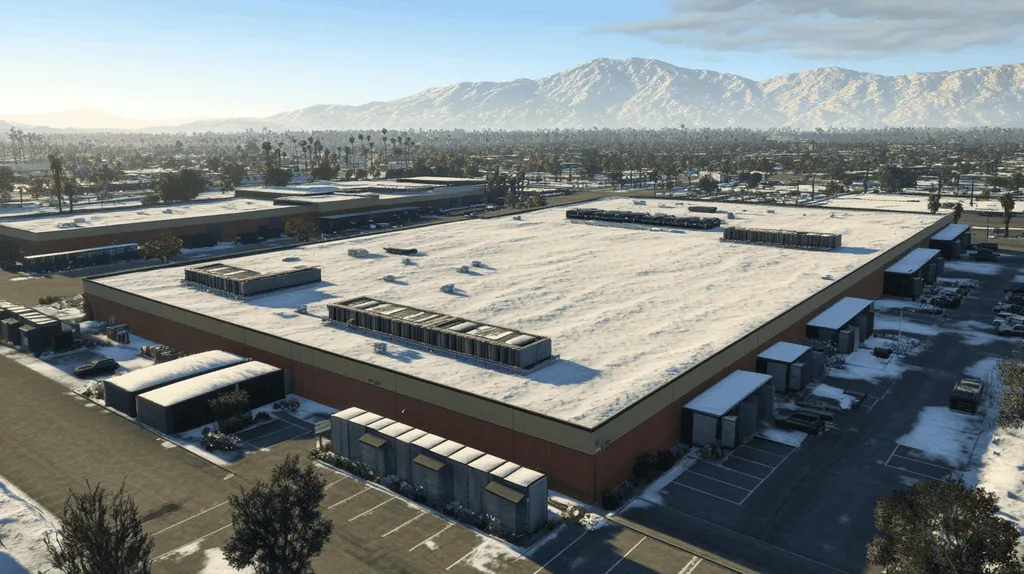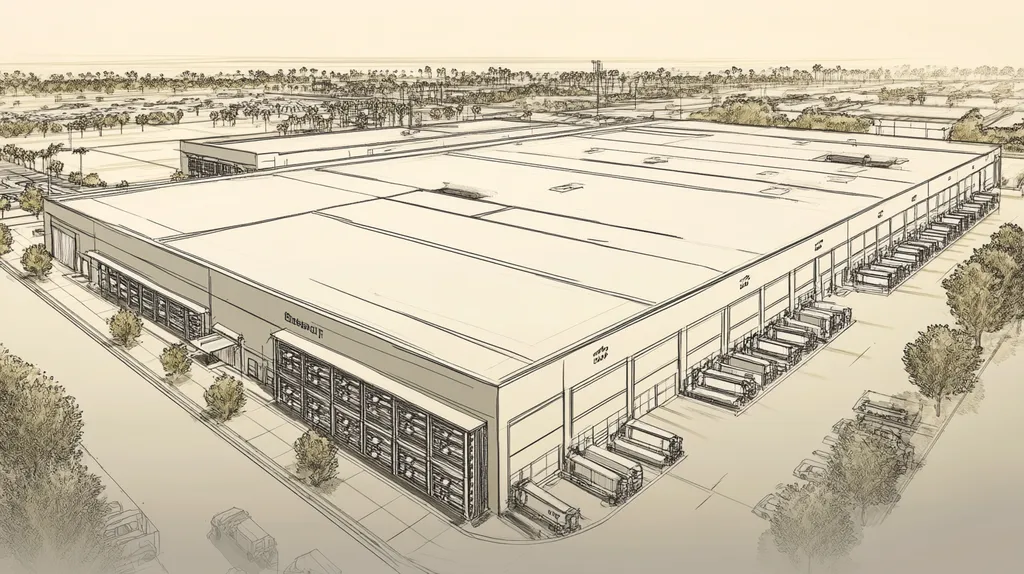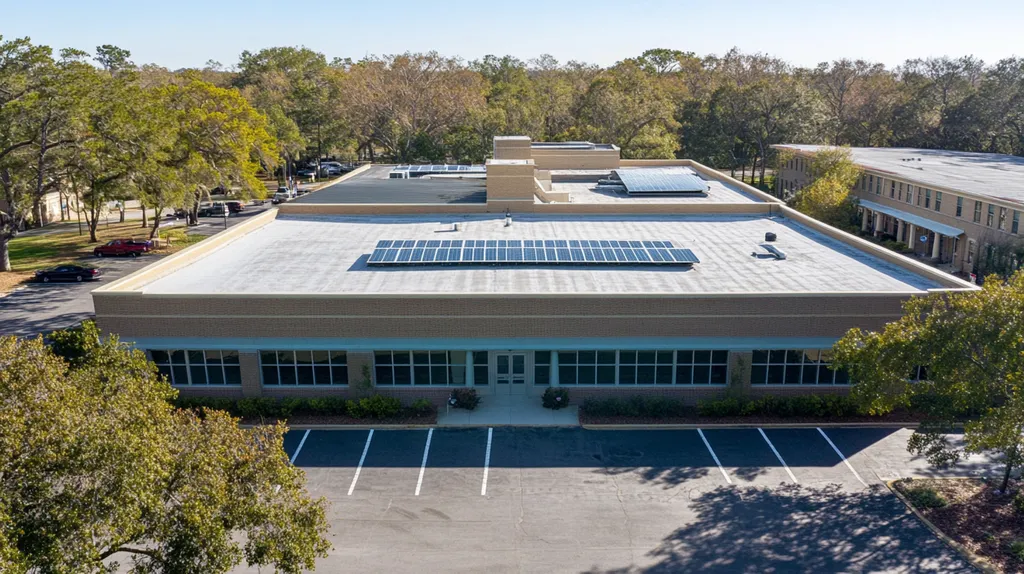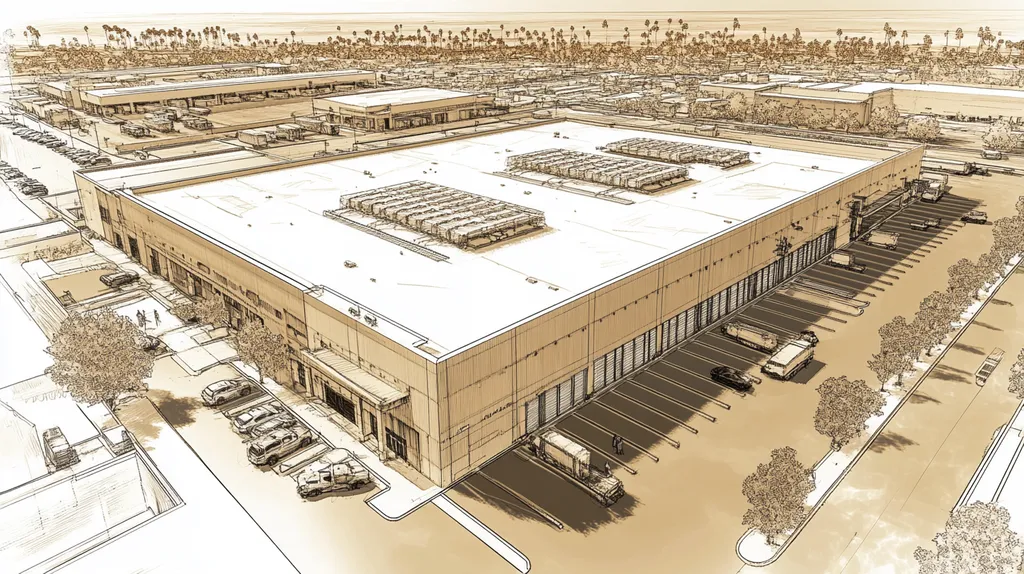Over 40% of commercial building problems stem from poor roofing material choices, leading to billions in annual repair costs across North America. For property professionals, selecting the wrong roofing system can trigger a cascade of issues from structural damage to skyrocketing energy bills.
This comprehensive guide examines critical factors in commercial roofing material selection, from performance metrics and financial considerations to compliance requirements and risk management protocols.
By understanding these key elements, property owners and facility managers can make informed decisions that protect their investments and ensure long-term building integrity.
SECTION 1: PERFORMANCE FACTORS
The choice of roofing materials not only affects a property’s appearance but also its long-term performance and cost efficiency. Studies show that improper selection can lead to maintenance costs that are up to 30% higher over time. Property owners need to grasp the importance of durability, weather resistance, and energy efficiency to ensure their roofs maintain optimal performance. This section clarifies these essential performance factors, simplifying the decision-making process for property professionals.
Durability and Lifespan
Durability is paramount when it comes to any roofing system. Traditional materials often deteriorate rapidly, leading to frequent and costly replacements. In contrast, modern options like TPO and EPDM can last 30 years or longer with minimal upkeep.
Choosing wisely can be the difference between a temporary fix and a long-lasting solution. High-quality membranes, engineered for resilience, can greatly extend the life of a roof, saving property owners from significant replacement expenses.
Another factor to consider is how different materials manage structural stresses. Metal roofs, for example, are lightweight yet incredibly durable, easing the load on older buildings. This benefit can be critical for properties needing additional structural support.
Key Action Items
Weather Resistance and UV Protection
Weather resistance is crucial for safeguarding against leaks and damage. Commercial roofs must endure everything from heavy rainfall to snow and extreme temperatures. High-quality materials are specifically designed to face these challenges successfully.
For instance, PVC roofing systems are excellent at providing UV protection, safeguarding against sun damage that can degrade other materials over time. This aspect is particularly vital in sunny climates where prolonged sun exposure can lead to premature roof failure.
Additionally, roofs that are built to withstand high wind speeds help prevent substantial damage. Systems designed to meet wind uplift standards are essential in hurricane-prone regions to ensure stability during storm conditions.
Key Action Items
Energy Efficiency and Thermal Performance
Energy efficiency is a growing concern for property owners, especially with rising energy bills. Selecting roofing materials with strong thermal performance can lead to substantial cost savings. Reflective roofing options, like cool roofs, significantly reduce cooling costs by reflecting harmful sunlight.
Quality insulation also plays a vital role in thermal performance. For example, insulated metal panels can effectively minimize heat loss in winter and heat gain in summer, enhancing overall energy efficiency.
Additionally, properties that utilize energy-efficient roofs may qualify for tax incentives or rebates, making them more appealing investments. Choosing materials that contribute to energy efficiency not only reduces operational costs but also has positive environmental impacts.
Key Action Items
SECTION 2: FINANCIAL CONSIDERATIONS
Understanding the financial implications of roofing choices is vital for property professionals. Overlooking total costs can lead to unexpected expenses that disrupt budgets and affect the bottom line. The initial installation price varies significantly based on the chosen roofing material, while ongoing maintenance costs can escalate if not effectively managed. This section explores initial costs, maintenance expenses, and potential long-term savings to support informed decision-making.
Initial Installation Costs
The upfront installation costs of commercial roofing materials can differ widely. Traditional materials such as asphalt typically range from $3 to $5 per square foot, while more durable alternatives, like metal roofing, can cost between $5 and $12 per square foot.
Budget constraints may lead owners to select cheaper options without weighing longevity. While lower-priced materials can save money at first, they often require more frequent replacements, leading to higher overall costs. In contrast, investing in quality materials means fewer replacements and repairs in the future.
Labor costs also play a role, as some materials require specialized installation skills. For example, single-ply systems often necessitate expert installation, which can raise overall costs. Therefore, obtaining multiple quotes from reliable contractors is essential to understand the market and ensure quality workmanship.
Key Action Items
Maintenance and Repair Expenses
Ongoing maintenance and repair expenses are vital components of long-term roofing financial planning. Regular inspections can catch small issues before they escalate into costly repairs. For example, a minor leak can lead to mold growth and substantial expenses if left unattended.
Different materials come with distinct maintenance requirements. For instance, TPO roofs generally need less frequent attention than built-up roofing systems, which may require regular inspections and care. By understanding these requirements, facilities managers can better allocate their maintenance budgets.
Maintaining a roof can significantly extend its lifespan, with studies showing that a well-kept roof can last up to 50% longer than a neglected one. Therefore, developing a proactive maintenance schedule is crucial for protecting the investment made in the roofing system.
Key Action Items
Long-Term Cost Savings and ROI
Long-term cost savings and return on investment (ROI) are essential factors to consider when selecting roofing materials. High-quality options can reduce energy costs through better insulation and reflectivity. Reflective roofing materials, for instance, can significantly lower cooling expenses during hot months.
Durable roofing systems also tend to require less frequent replacements, leading to further savings. A carefully chosen roof can last for decades, minimizing costly re-installations and attracting higher asset value over time.
Additionally, some roofing systems qualify for tax incentives or energy efficiency rebates, providing property owners with additional financial recovery options. By understanding the long-term implications of their choices, decision-makers can invest wisely in roofing solutions that enhance property value and operational efficiency.
Key Action Items
SECTION 3: COMPLIANCE REQUIREMENTS
Navigating compliance requirements is essential for commercial property owners and facility managers. Ignoring building codes and regulations may result in hefty fines, project delays, and even safety hazards. Alarmingly, research shows that as much as 30% of commercial building failures stem from non-compliance with local codes and standards. This section highlights critical compliance aspects, including building codes, environmental standards, and industry certifications, enabling better decision-making.
Building Codes and Regulations
Building codes can differ significantly between regions, affecting both material selection and construction methods. These codes outline essential safety standards for roofs, including load capacities and required materials. For example, many states mandate specific fire-resistance ratings for commercial roofs to guarantee safety during emergencies.
Non-compliance can lead to legal penalties and potentially void insurance policies. Municipalities typically conduct routine inspections to verify compliance, and falling short can necessitate costly remediation. Therefore, property owners must familiarize themselves with local regulations prior to starting any roofing project.
Collaborating with qualified roofing contractors who are well-versed in local building codes is crucial. These professionals can offer guidance on selecting materials and installation practices that meet or exceed compliance requirements. Prioritizing adherence not only protects the property but also secures the investment over the long term.
Key Action Items
Environmental and Health Standards
Increasingly, environmental standards play a vital role in commercial roofing decisions. Laws aimed at reducing environmental impact regulate the materials used in roofing systems, particularly regarding energy efficiency and recyclability. For instance, roofs are often required to comply with energy codes that specify minimum insulation levels.
Adherence to health standards concerning construction materials is also crucial, especially regarding hazardous substances like asbestos and VOCs in adhesives. Ignoring these standards can pose serious public safety risks and invite legal challenges.
Selecting roofing materials that meet environmental standards not only ensures compliance but also enhances sustainability. Reflective roofing materials, for instance, can lower energy consumption and cooling costs, aligning with green initiatives. Conducting impact assessments can identify potential compliance issues ahead of time, thus fostering responsible decision-making.
Key Action Items
Industry Certifications and Standards
Alongside local codes, industry certifications establish benchmarks for material performance and safety. Recognized programs, such as the ENERGY STAR® label, indicate compliance with energy-efficiency standards, adding credibility to chosen materials.
Relevant standards, such as those from the National Roofing Contractors Association (NRCA), outline best practices and safety measures. Buildings adhering to these certifications are more likely to attract tenants focused on sustainability and safety.
Furthermore, roofing materials that boast industry certifications often come with warranties and assurances of quality, which can alleviate future repair costs. For property managers, opting for certified materials translates to lower risk and greater long-term value. Staying informed on the latest certifications is essential for ensuring compliance and maintaining market credibility.
Key Action Items
SECTION 4: RISK MANAGEMENT
The implications of commercial roofing extend far beyond appearance and installation expenses. Alarmingly, up to 40% of facility issues can be traced back to roofing failures, leading to severe financial repercussions. Property owners and facility managers must navigate potential risks to protect their investments and ensure the safety of occupants. This section focuses on leak and water damage risks, fire resistance and safety, as well as the essential elements of structural integrity and stability.
Leak and Water Damage Risks
Water intrusion poses a significant threat to commercial properties. Leaks can damage building materials, promote mold growth, and disrupt business operations. Statistics reveal that 25% of all roof failures result from water damage, creating costly remediation needs and productivity losses.
Regular inspections and maintenance are vital to identify vulnerabilities early. Addressing small cracks or seams promptly can prevent larger leaks, protecting both the roof and the interior of the building. Proactive measures ultimately save property managers time and money.
Utilizing high-quality materials, such as thermoplastic polyolefin (TPO) or PVC membranes, can enhance water resistance. These materials not only provide superior waterproofing but also improve energy efficiency. For roofing systems due for an upgrade, exploring these options may substantially reduce water-related risks.
Key Action Items
Fire Resistance and Safety
Fire hazards linked to roofing materials demand careful consideration. In commercial settings, fire risks warrant a thorough evaluation of material safety, as studies indicate that around 20% of building fires originate from roofing systems.
Choosing materials with appropriate fire ratings can greatly reduce this risk. For instance, modified bitumen and metal roofing systems offer superior fire resistance compared to standard asphalt. Selecting these options not only boosts safety but also ensures compliance with local building codes.
Moreover, proper installation techniques are critical for fire safety. Qualified professionals should handle application to eliminate gaps and vulnerabilities that can lead to fire hazards. Regular training on fire safety for maintenance staff is also crucial to enhance overall safety across the property.
Key Action Items
Structural Integrity and Stability
A compromised roof can threaten the structural integrity of an entire building. Factors such as roof load capacity, weather conditions, and material degradation all impact stability. Reports indicate that inadequate roofing solutions can lead to severe structural failures, costing property owners millions.
Assessing load-bearing capacity is essential, especially in older buildings. Regular inspections can identify signs of sagging or undue stress, which may signal underlying issues. Promptly addressing these concerns is crucial to ensure roofs can withstand environmental stressors.
Material selection plays a key role in enhancing structural durability. Utilizing reinforced concrete or advanced synthetic materials can significantly improve longevity and resilience against harsh conditions. Investing in superior roofing options helps protect structures from extreme weather events.
Key Action Items
SECTION 5: OPERATIONAL PROCEDURES
The stakes for proper roofing operational procedures are high. Poor installation and maintenance can lead to leaks, structural damage, and costly repairs. Research indicates that up to 80% of commercial roof failures arise from installation issues. This section outlines vital operational procedures that property owners and facility managers must prioritize to ensure long-lasting and efficient roofing solutions.
Installation and Construction Process
Effective installation is critical for the longevity of commercial roofs. Property managers should ensure that roofing contractors meticulously follow manufacturer specifications during installation, including understanding load requirements and selecting suitable materials.
Conducting pre-installation inspections can uncover potential issues by assessing the existing structure for damage and determining material suitability. Skipping these inspections can result in unexpected complications later.
During installation, maintaining clear communication between the contractor and property managers is essential. This approach allows any emerging issues to be addressed promptly, thus minimizing the risk of installation-related failures.
Finally, documenting the installation process is necessary. This not only provides a reference for future maintenance but also plays a critical role in warranty claims.
Key Action Items
Routine Inspection and Maintenance
Routine inspections are essential for identifying roofing issues before they become costly. Property owners should plan for inspections at least twice a year, ideally in spring and fall. These inspections should focus on debris accumulation, membrane integrity, and signs of wear and tear.
Adopting a checklist after each inspection can enhance the maintenance approach by systematically monitoring the roof’s condition and addressing issues swiftly. For example, applying sealants to vulnerable areas can prevent water damage and extend the roof’s lifespan.
A proactive maintenance plan is also beneficial, including activities like cleaning gutters, repairing flashing, and replacing worn components to sustain roof integrity.
Fostering a strong relationship with a qualified roofing contractor ensures maintenance needs are met efficiently, providing timely responses for urgent repairs.
Key Action Items
Repair and Replacement Protocols
Timely repairs extend the life of a commercial roof. Property managers must establish clear protocols for identifying and addressing repairs. This includes evaluating the type of damage, assessing its severity, and prioritizing urgent repairs accordingly.
For minor repairs, such as patching leaks or replacing damaged shingles, acting quickly is critical. Delays can escalate problems, leading to more extensive structural damage and increased costs.
In the case of severe damage, roof replacement may be essential. Knowing when to repair versus replace relies on thoroughly assessing the roof’s condition and remaining lifespan, particularly for roofs nearing 20 years of age.
A detailed cost-benefit analysis should guide decision-making, considering immediate repair costs alongside the long-term value of maintaining a high-performing roof.
Key Action Items
SECTION 5: OPERATIONAL PROCEDURES
The stakes for effective roofing operational procedures are considerable. Poor installation and inadequate maintenance can lead to significant leaks, structural damage, and costly repairs. Alarmingly, studies show that up to 80% of commercial roof failures are due to installation issues. This section outlines essential operational procedures that property owners and facility managers must prioritize to ensure durable and efficient roofing solutions.
Installation and Construction Process
Effective installation directly impacts the longevity of commercial roofs. Property managers should guarantee that roofing contractors strictly follow manufacturer specifications during the installation. This includes understanding weight requirements, layering procedures, and the selection of suitable materials.
Conducting pre-installation inspections is vital to identify any potential issues. These inspections assess the existing structure for damage and determine if the chosen materials are appropriate. Skipping this step can result in unexpected complications later on.
Throughout installation, maintaining open and clear communication between the contractor and property managers is essential. This practice allows for immediate resolution of any issues that arise, thereby minimizing the risk of failures due to improper installation.
Thorough documentation of the installation process is also crucial. This provides a reliable reference for future maintenance needs and is instrumental for warranty claims.
Key Action Items
Routine Inspection and Maintenance
Routine inspections are critical for identifying roofing problems before they escalate into larger issues. Property owners should plan to conduct inspections at least twice yearly, ideally in spring and fall. These inspections should focus on assessing debris buildup, membrane integrity, and signs of wear.
To bolster maintenance efforts, property managers can implement a checklist post-inspection. This offers a systematic way to monitor the roof’s condition and promptly address any identified concerns. For example, applying sealants to vulnerable spots can prevent serious water damage and extend the roof’s lifespan.
In addition to scheduled inspections, adopting a proactive maintenance plan is key. This may involve cleaning gutters, promptly repairing flashing, and replacing worn components to uphold the roof’s integrity.
Building a strong partnership with a qualified roofing contractor can help ensure maintenance needs are addressed efficiently while facilitating timely responses for urgent repairs.
Key Action Items
Repair and Replacement Protocols
Timely repairs are essential for prolonging the life of a commercial roof. Property managers must establish clear protocols for identifying and addressing necessary repairs. This includes evaluating the type of damage, assessing its severity, and determining the urgency of repairs.
For minor issues, such as patching leaks or replacing damaged shingles, prompt action is crucial. Delays can exacerbate problems, leading to more significant structural damage and increased costs.
In situations involving extensive damage, a roof replacement may be necessary. Knowing when to repair versus replace relies on a thorough assessment of the roof’s condition and remaining lifespan. Generally, roofs approaching 20 years should be evaluated for potential replacement.
A comprehensive cost-benefit analysis is vital in guiding the decision-making process. This analysis should factor in immediate repair costs and the long-term value of maintaining a high-performing roof.
Key Action Items
The Bottom Line
With over 40% of commercial building problems stemming from poor roofing decisions, property professionals cannot afford to make uninformed choices about roofing materials.
The financial implications are staggering – improper material selection leads to premature replacements, increased energy costs, and potential structural damage that can cost businesses millions in repairs and lost productivity.
Success requires a systematic approach: evaluating performance factors like durability and weather resistance, understanding total cost implications, ensuring regulatory compliance, implementing proper risk management protocols, and following established operational procedures.
By carefully considering these critical elements and working with qualified professionals, property owners can select roofing solutions that protect their investments and provide lasting value for decades to come.
FREQUENTLY ASKED QUESTIONS
Q. What factors should I consider for my commercial roof’s durability?
A. You should evaluate the longevity of materials, their resistance to weather conditions, and maintenance requirements. Choosing options like TPO or EPDM can significantly extend the lifespan of your roof. Additionally, consider how different materials handle structural stresses to ensure they meet your building’s needs.
Q. How can initial costs impact my commercial roof investment?
A. Initial installation costs are crucial as lower-priced materials often lead to higher maintenance costs. While traditional materials may save money upfront, investing in durable options means fewer replacements and repairs, providing a better long-term return. Evaluating all costs, including labor, is essential for budgeting effectively.
Q. What compliance requirements should I follow for my industrial roof?
A. Familiarize yourself with local building codes, environmental regulations, and any industry certifications relevant to roofing. Compliance not only helps avoid fines but also ensures safety and performance. Collaborating with qualified roofing contractors can help you meet these requirements effectively.
Q. How can I manage leak risks in my commercial roof?
A. Regular inspections are key to spotting vulnerabilities early. Addressing small issues promptly can prevent larger leaks and interior damage. Investing in high-quality waterproofing materials, like TPO and PVC membranes, can enhance your roof’s ability to resist water intrusion, providing additional security.
Q. How important is routine maintenance for my industrial roof?
A. Routine maintenance is vital for extending the life of your roof. Scheduled inspections allow you to monitor conditions and address minor issues before they escalate. Regular cleaning and repair ensure optimal functionality and protect your investment over time, reducing long-term costs significantly.
Q. What are effective operational procedures for roof installation?
A. Effective operational procedures include verifying contractor adherence to manufacturer specifications, conducting pre-installation inspections, and maintaining communication with contractors throughout the process. Documenting each step enhances accountability and aids in future maintenance and warranty claims.
Q. How do roofing materials affect energy efficiency in commercial properties?
A. Roofing materials significantly influence energy efficiency through thermal performance and reflectivity. Options like cool roofs can lower cooling costs by reflecting sunlight, while quality insulation minimizes heat transfer. Being energy-efficient not only reduces utility bills but can also qualify your property for tax incentives.

